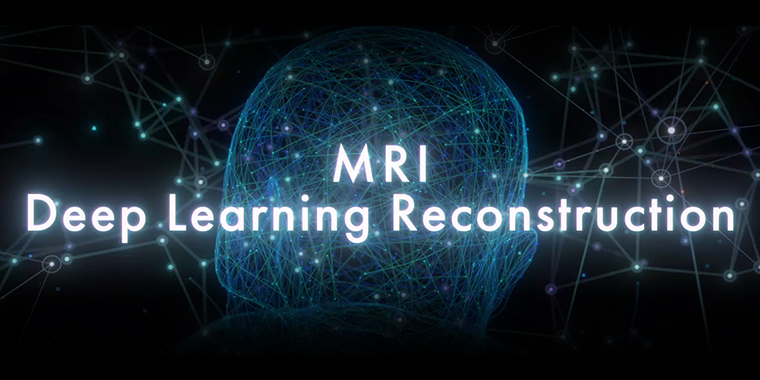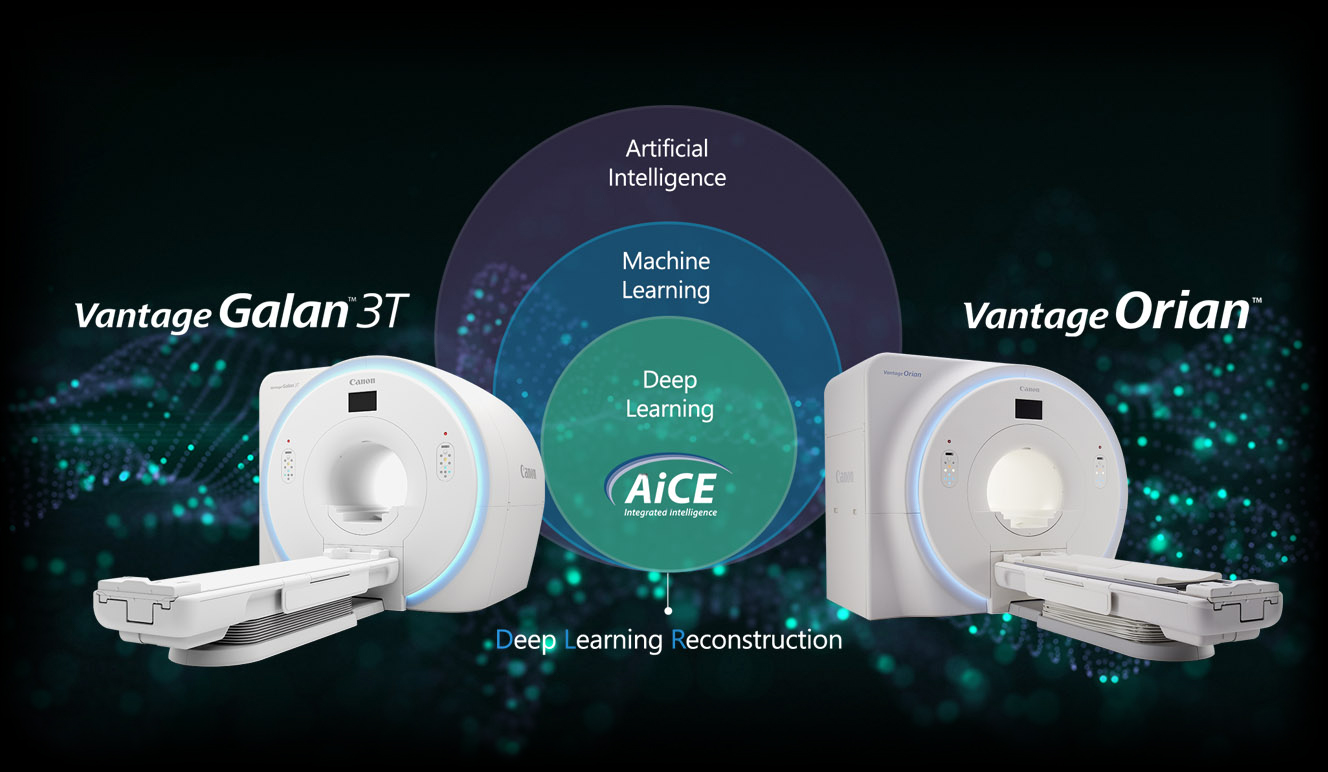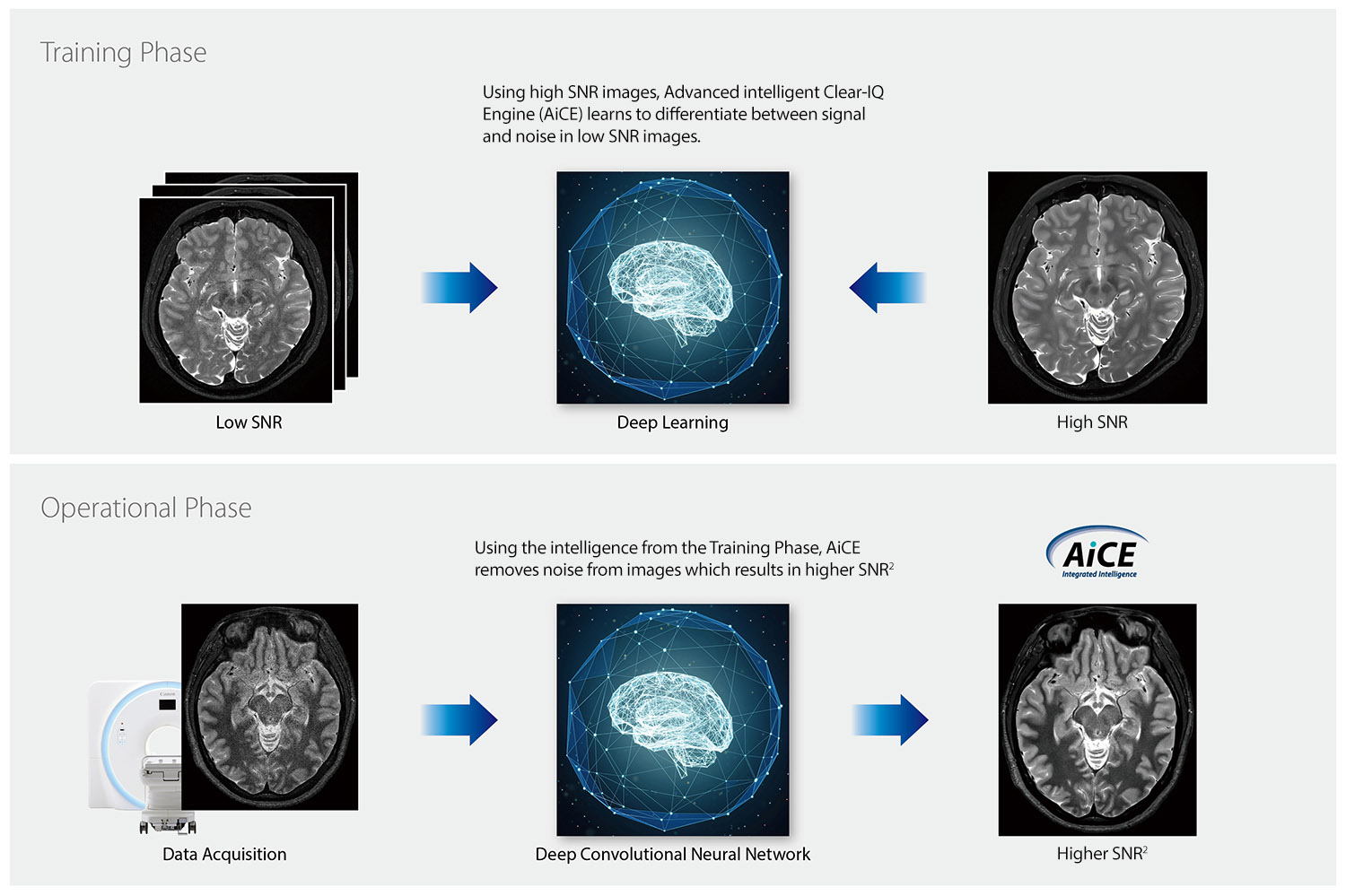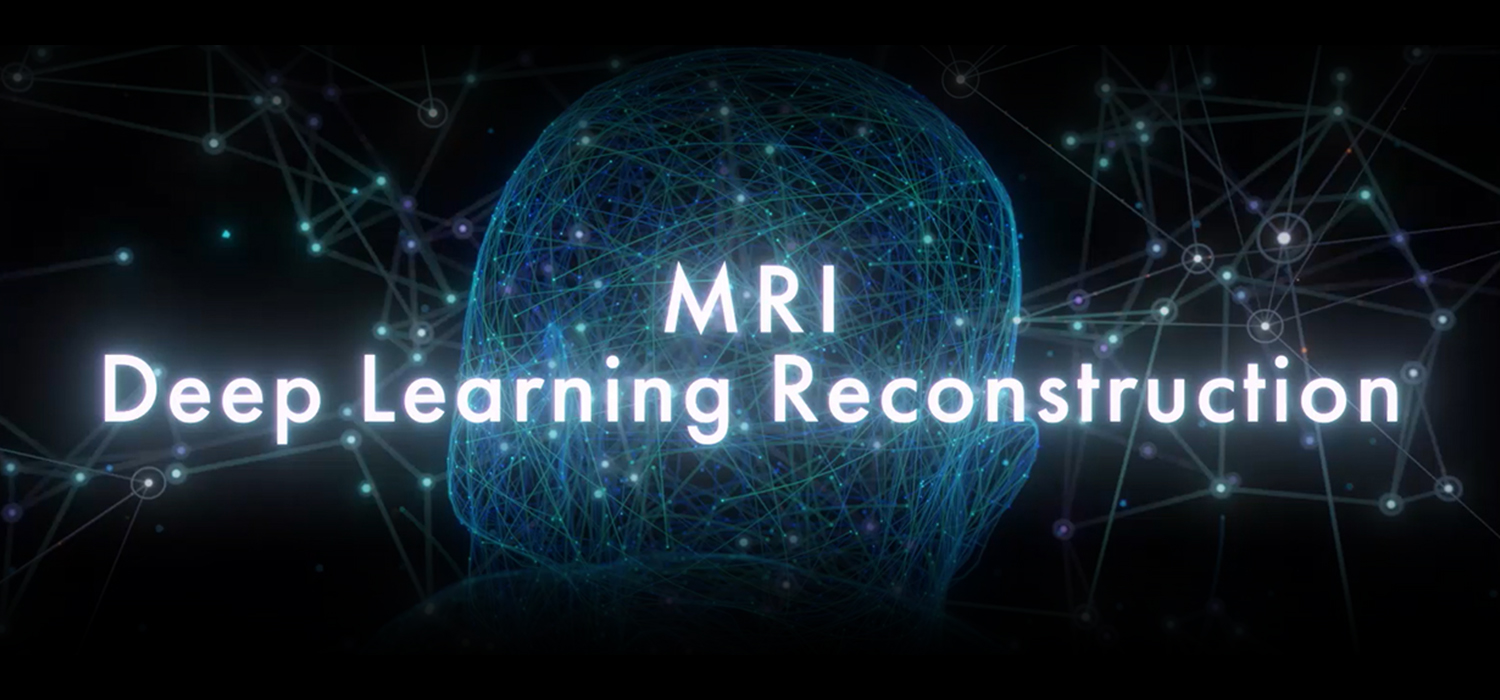
Deep Learning
The deep learning methods of the Deep Convolutional Neural Network (DCNN) are able to process enormous amounts of data through an network of decision making nodes, or neurons, and are well regarded for their excellent performance in image recognition-based applications.

Deep Learning Reconstruction (DLR)
AiCE¹ was trained on vast amounts of high-SNR MRI images reconstructed with an advanced algorithm that is too computationally intensive for clinical use. This training taught AiCE to distinguish true signal from noise. The results were validated by a team of radiologists, medical physicists, AI scientists, and clinical researchers, producing a fast, fully-trained reconstruction algorithm ready for clinical use.
The DCNN learns which methods are best applied to maintain the spatial resolution and low-noise properties contained in high SNR MR images. The more variations of data supplied during training, the better the final algorithm will perform in terms of image quality and processing speeds.
The DCNN essentially programs itself as it learns, to become more accurate and more efficient with every new training task. The training is monitored by an engineer with expertise in AI and DCNN, who may vary some operating conditions to ensure that peak performances are achieved.
The software then undergoes an important validation, where it is provided with only low-quality data to reconstruct based on what it has learned. The high-quality target images must not be known to the DCNN and are used by the AI engineer to evaluate accuracy and performance based on various image quality metrics. Once validated, the neural network is wrapped at peak performance where it contains all the knowledge required to perform an advanced, quality reconstruction from virtually any variation of patient size.

¹AiCE MR is applicable to brain and knee imaging
²AiCE provides higher SNR compared to typical low pass filters.



